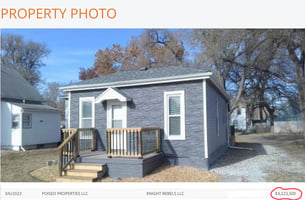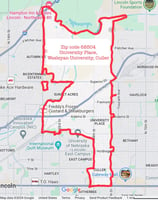Explore how fair housing laws ensure equal opportunity in housing and what you can do to support...
‘Affordable Housing’: The Hidden Costs
What is affordable housing?
Affordable housing is merely a marketing term to encourage the development of new construction housing. It’s been portrayed as a necessary measure by the HUD (United States Dept. of Housing and Urban Development). This might seem like a sarcastic definition as ‘affordable housing’ was created with the idea that it would provide housing for low-income and eligible individuals in which they don’t pay more than 30% gross income for housing costs; however it’s been abused. Many housing units that are getting TIF (tax increment financing)- a taxpayer funded grant for developers to get a discount on taxes for up to 15 years; for building affordable housing, are not making them truly affordable. The average median rent price in Lincoln, Nebraska is $1,300, but ranges between $450-$3,500. Our current rental market is considered cool meaning low demand. So let me ask you this, why the push to build so many apartment buildings if there is not a demand for it? To make matters worse, many of these newly built expensive apartments, do not accept Section 8 Housing and require huge deposits making them unattainable for many.
1. Rehabilitation or Gentrification?
Gentrification is the practice of restoration or upgrading of deteriorating urban areas by middle class usually resulting in the displacement of low-income residents. Lancaster county’s PlanForward 2050 guide explicitly states that their goal is not to have gentrification happen in neighborhoods. However it’s happening all across the older parts of Lincoln. As older structures are being torn down and replaced with middle housing units, it’s displacing the prior tenants and homeowners. Why? Because the new units are unaffordable to them. This is only adding to the precarious situation of a ‘rent only’ housing market, because affordable houses are hard to find. But why are they hard to find? According to our research we’ve conducted, there are twice as many houses going up for sale every year in Lincoln than 10 years ago. Shouldn’t that mean that there are more houses available to buy? In the last decade Lincoln has gained roughly around 29,000 people and 43% of those residents are renters. So still 57% or more than half of the population are homeowners. No the reason there is a shortage of houses is because they are ceasing to exist. In a different article I elaborated on this issue, that many houses are being purchased in bundles. These groupings of houses are sold without ever coming up for sale to the public and are strictly rented out. The number of single-family homes that are turning rental is skyrocketing.
2. Lead Contamination
Something serious that is being swept under the rug, is the lack of concern for lead dust contamination. Personally I find it ironic that on one side of the government you can receive a grant to have your house remediated, being taped off with caution tape. Yet on the other hand you can bulldoze a house with no qualms, and spread lead dust and asbestos up to 400 feet without wind and get a grant to do it. According to the EPA the most common way that lead enters the body is via dust. Yes, that’s right, not through paint chips or other lead structures, but from the actual dust. In recent years, other states have taken initiatives to deal with lead properly. Oregon is a leading example of this as the city of Portland requires pre-1978 buildings to be deconstructed and parts salvaged rather than demolished. This encourages reuse of materials and minimizes the contamination levels by far.
3. Declining Home Ownership
A concerning result of the affordable housing movement, is the ceasing ability to be a home owner. As more homes are being bought up by investors and never come available it creates a housing shortage. However, the plans for building more houses is not in the cards. This is not just in Nebraska, but on a Federal level; single-family homes are being phased out. Are there bills to get this stopped? Yes, and no. There are no current State or Federal laws limiting investors to how many single-family homes they may own. A few have been proposed to limit actions of Investors to allow them only have 50 or 70 single-family homes. But 50-70 houses is still a lot of single-family homes, especially when you look at the fact that there could be an unlimited amount of Investors. For example, say Lincoln, NE has 300 Investment Companies, in which each Investor owns the maximum of 70 houses each, that’s 21,000 single-family homes.
Conclusion
In what you’ve just read, do you still feel affordable housing is truly ‘affordable’? Do you feel rushed to buy a home? What about all the costs involved? No one’s accounting for the environmental costs of contamination, or the people who’ve had to seek medical treatment for lead poisoning due to houses around them being demolished. Not to mention that demolition and rebuilding of structures actually costs more than the conversion and rehabilitation of buildings. One of the biggest accomplishments for a adult is to be able to own their own home. But because of current mortgage rates, home prices, and the shortage of houses caused by Investors it has caused depression for many hopeful home buyers. A study by the Pew Research Center in 2022, found about 47% of U.S. adults that rent their homes, said they feel stress or anxiety over not being able to afford a place to live, with younger adults (ages 18-29) and low-income households feeling the most stress. There was also, a survey conducted by the National Association of Realtors that found, 51% of millennials reported being able to afford a house, as their biggest stressor.


